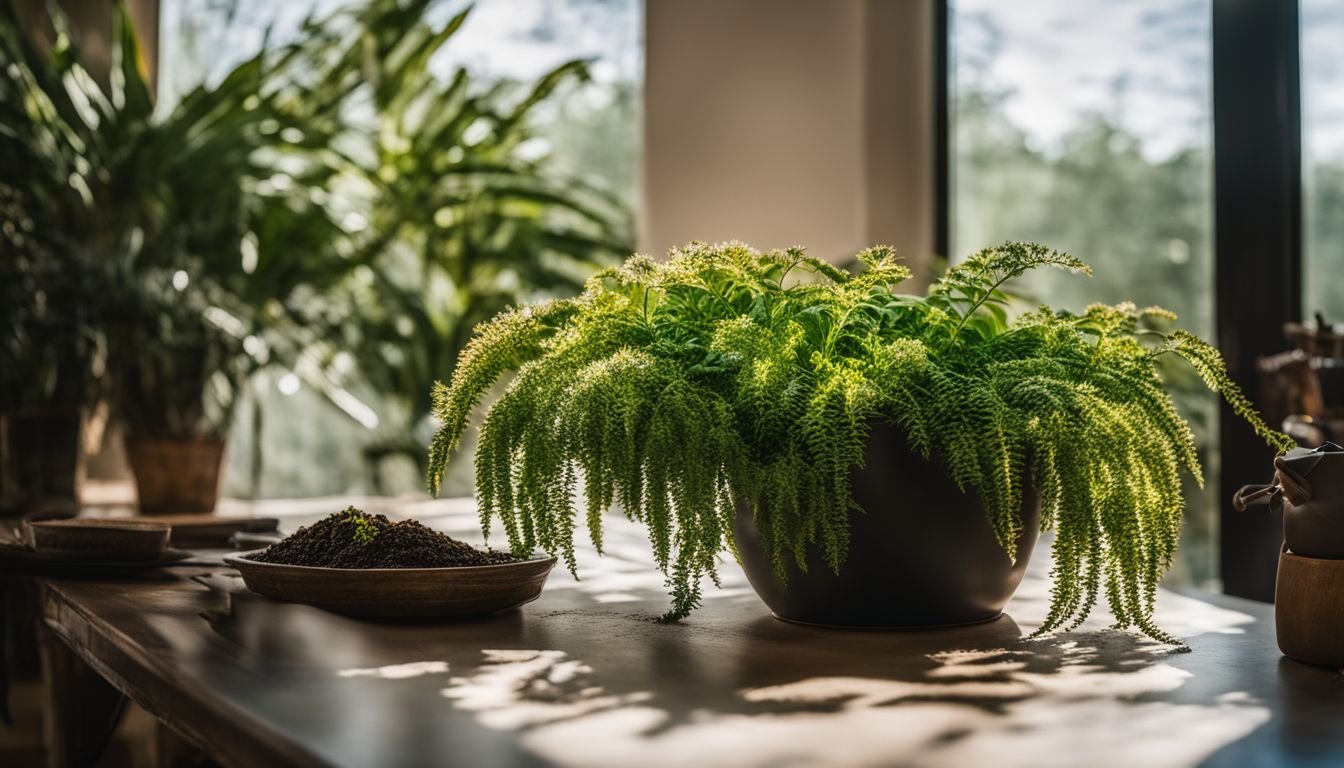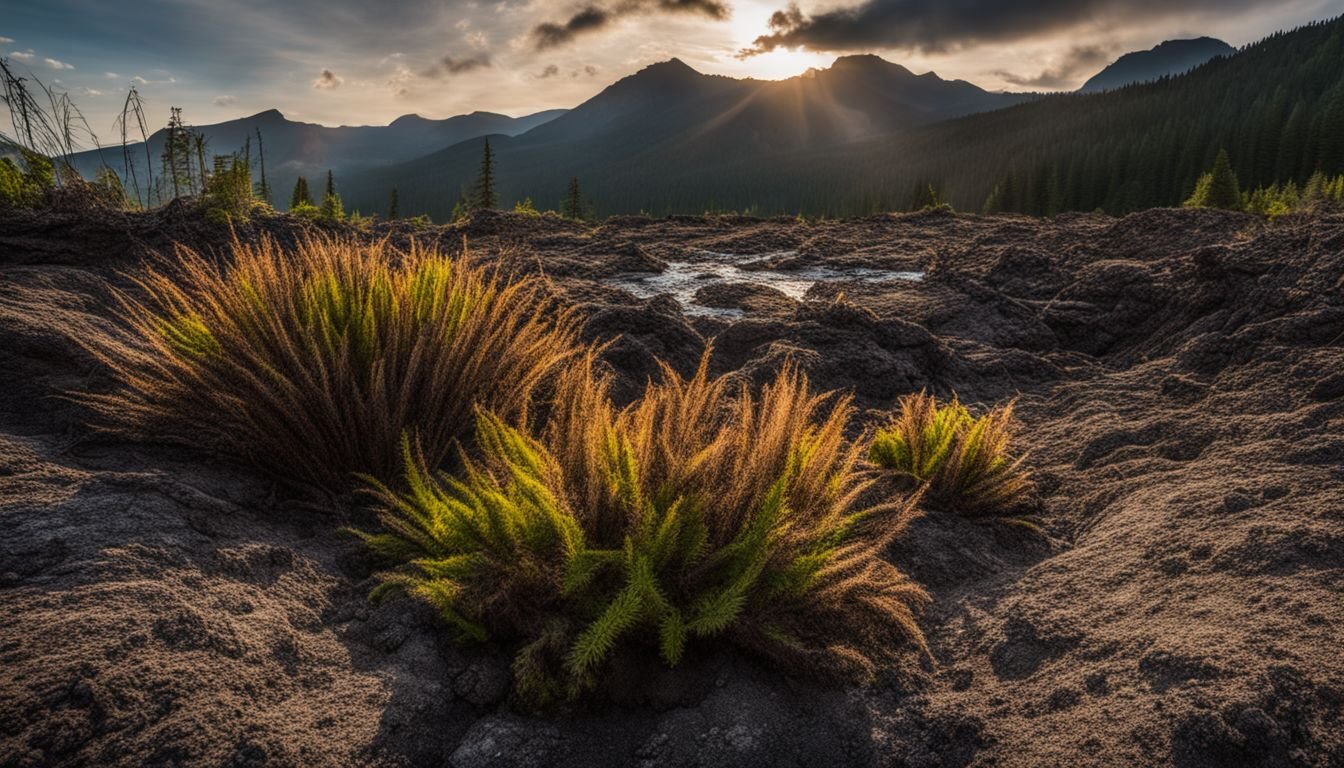Taking care of a Devil’s Backbone plant in the Aussie climate might initially seem like a bit of a head-scratcher. Maybe you were drawn to its funky shape and vibrant colours, only to wonder how on earth to keep it happy and healthy once you got it home.
We’ve worn those shoes, too. Scouring for accurate info on nurturing these unique plants turned into quite the adventure for us – one we tackled with genuine gusto. What stood out was learning that the Devil’s Backbone, known scientifically as Pedilanthus tithymaloides or Euphorbia tithymaloides, is right at home in USDA zones 9 and 10, which luckily matches up well with many areas around Australia.
Our guide aims to clear up any bewilderment you might have. From choosing just the right soil mix that these succulents love, mastering the knack of propagation through stem cuttings, to warding off those pesky pests and diseases looking to make trouble for your beloved plants – we’ve dug deep into our research so your green mates don’t just scrape by but thrive.
Keep reading for all the nitty-gritty details!
Key Takeaways
- Devil’s Backbone plants prefer poor or sandy soil with good drainage, so mixing sand with coco peat makes an ideal potting mixture. Make sure the pots have drainage holes to prevent water from sitting too long and causing root rot.
- These unique plants need a balance of sunlight exposure; they thrive in bright, indirect light but should be protected from harsh afternoon sun rays. Placing them where they can enjoy morning sunshine but stay shaded later will maintain their vibrant colors.
- Watering needs are specific for Devil’s Backbone plants in Australia — only when the top few inches of soil feel dry. Less frequent but thorough watering encourages deep root growth, helping them adapt well to varying Australian climates.
- Propagating Devil’s Backbone through stem cuttings is simple and effective. After cutting, let the latex dry before planting in a suitable mix for succulents and cacti. This method allows gardeners to easily expand their collection.
- Regular maintenance like pruning dead or sick parts prevents pests and diseases from spreading. Using clean tools for pruning and opting for natural solutions like neem oil helps keep these plants healthy without harming the environment around them.
Essential Care Requirements for Devil’s Backbone Plants

To keep your Devil’s Backbone plant thriving, you need to get a few things right. These include the type of earth it grows in, how often you water it, and how much sunlight it gets.
Optimal Soil Conditions
Devil’s Backbone plants flourish in a variety of soils, but they do best in poor or sandy soil. You can also mix sand with coco peat to create a potting mixture that these plants love.
This combination helps the roots get enough air and keeps them from sitting in water too long, which could cause rot.
We always aim to keep the soil evenly moist. Overwatering can hurt your plant because its roots are prone to rot if they’re too wet for too long. It’s crucial to find a balance – watering just enough but not too much.
Using pots with drainage holes helps prevent excess moisture build-up.
Watering Needs
We all know keeping our devil’s backbone plants healthy means getting their watering just right. Check the soil, and if the top few inches feel dry, it’s time to water them. This plant likes its soil moderately moist, so ensure you’re not overdoing it.
Using rainwater or tap water left out overnight works great for lowering moisture content in watering.
It’s key to provide low moisture irrigation for your devil’s backbone here in Australia. The climate can vary widely, impacting how often these plants need a drink. As a rule of thumb, less frequent but thorough watering encourages deeper root growth and healthier plants.
Next up, let’s shed some light on how much sun your devil’s backbone needs to thrive.
Suitable Sunlight Exposure
After ensuring your Devil’s Backbone plants receive the right amount of water, focusing on their sunlight needs is crucial. This unique member of the spurge family thrives best in bright, indirect light.
Direct sun can harm its leaves, causing them to lose their vibrant colours. Place them in a spot where they can enjoy the morning sun but are shaded from the harsh afternoon rays.
“Bright but gentle sunlight nurtures the Devil’s Backbone, keeping it healthy and vibrant.”
For gardeners in areas that match USDA zones 9 and 10, finding this balance is key. Keep an eye on how the sunlight shifts throughout the day and move your plants as needed to avoid overexposure.
Regular Maintenance also includes rotating them for even growth and ensuring each side receives ample light. Managing their exposure not only promotes growth but also highlights their striking redbird cactus-like margins and alternately arranged leaves, contributing to a thriving garden display.
Effective Propagation Techniques for Devil’s Backbone Plants

We’ve found that multiplying Devil’s Backbone plants is simple with stem offshoots. You just trim a healthy section, let its latex dry, and then plant it in a nurturing medium. This method turns one plant into many, keeping your garden full of these eye-catching euphorbias.
Using the right soil blend is crucial; mix peat with perlite for perfect drainage and growth conditions.
Using Stem Cuttings
Spring offers the best chance to multiply your Devil’s Backbone plants through stem cuttings. First, choose a healthy branch and cut a piece about 10-15 centimeters long. Make sure the tool you use for cutting is sharp to prevent damage.
This method taps directly into the plant’s ability to regenerate, turning a single branch into an entirely new plant.
After cutting, let the end of the branch dry out for a few hours; this step is crucial to avoid rot when planting. The milky sap that appears should also dry up during this time – it’s normal and part of what makes these euphorbias unique.
Next, place your cutting in a pot with well-draining soil mix designed for succulents or cacti. Ensure the environment is warm and bright but keep it out of direct sunlight until roots have formed.
Water sparingly at first only when the soil feels dry to touch; over-watering can harm young cuttings before they establish roots. In just a few weeks, you’ll see signs of growth as your new Devil’s Backbone begins its journey from a simple stem piece into a thriving plant family member.
With patience and care, propagation by stem cuttings proves both easy and rewarding for Australian garden enthusiasts looking to expand their collection without much fuss.
Creating a Suitable Potting Mix
Creating a good soil mix is key for the health of your Devil’s Backbone plants. You’ll want to combine a rich houseplant blend with plenty of grit to boost drainage. This ensures that water flows freely, preventing root rot and encouraging strong growth.
Mixing in sand is a fantastic way to achieve this balance. It might seem simple, but getting the mix right makes all the difference.
Choosing the right container also plays a big part in your plant’s success. We’ve found that unglazed clay pots work wonders for Devil’s Backbone plants, allowing air and moisture to move through the material naturally.
When you’re repotting, always opt for these kinds of vessels coupled with your well-prepared potting mixture.
As we look after our potted pals, it’s crucial not just how we plant them but where they stand next – managing pests and diseases is up next on our list.
Managing Pests & Diseases Affecting Devil’s Backbone Plants
We know Devil’s Backbone plants stand tough against pests and diseases. Yet, like all garden favorites, they sometimes face threats. Regularly checking leaves and stems helps catch issues early.
If you spot unusual spots or insects, act fast to keep your plants healthy.
Pruning plays a big part in prevention. Removing dead or sick parts stops problems from spreading. Make sure to use clean cutting tools to avoid passing any trouble from one plant to another.
For those rare times when pests do show up, natural solutions often work well. Neem oil is a great choice for keeping bugs away without harming the plant or the environment around it.
Spraying affected areas according to the product’s instructions can make a big difference.
Likewise, fungal infections might try to take hold during wetter months. Using fungicides can help protect your Japanese Poinsettia from harm. Choose products safe for home gardens and follow directions carefully.
By staying alert and using these strategies, we ensure our Devil’s Backbone plants stay vibrant and strong throughout the year.
Conclusion: Ensuring Healthy Growth of Devil’s Backbone Plants in Australia
Growing and caring for Devil’s Backbone plants in sunny Australia can be a rewarding task. With their unique blooms and lush foliage, these plants add a pop of color to any garden or home.
To keep them thriving, focus on using well-draining soil, regulating water intake, and ensuring they get enough but not too much sunlight. Cutting stems for propagation gives life to new plants easily.
Tackling pests and diseases early keeps them healthy. So, with a bit of care and attention, your Devil’s Backbone will grow strong under the Australian sun.
FAQs
1. What is a Devil’s Backbone plant?
A Devil’s Backbone plant is a unique, easy-to-care-for houseplant known for its zigzag or backbone-like stem pattern.
2. How do I grow a Devil’s Backbone plant in Australia?
To grow a Devil’s Backbone plant in Australia, place it in well-draining soil, provide bright indirect sunlight, and water it when the topsoil feels dry.
3. Can the Devil’s Backbone plant handle the Australian sun?
Yes, but while it enjoys bright light, direct harsh sunlight can damage its leaves. It’s best to keep it in a spot with filtered sunlight.
4. What should I do if my Devil’s Backbone plant gets too big?
If your Devil’s Backbone plant grows too large, you can easily prune it back to maintain its size and shape without harming the plant.
